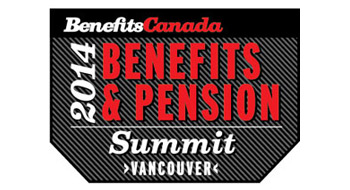
As two very different employers pointed out at the 2014 Benefits & Pension Summit held in Vancouver, a successful employee wellness strategy is based on an organization’s unique corporate culture and the specific needs of the workforce.
“We have a strong and rich culture at Mountain Equipment Co-op (MEC) where our staff, from the head office in Vancouver down to our stores across Canada, tend to live very active lives and love the outdoors,” said Abbie Hodgson van Essen, the retailer’s manager, compensation & benefits. “Our wellness strategy grew from conversations with employees at the grassroots and developed holistically from there.”
Over time, MEC has incorporated outdoor play days for staff, a paid volunteerism program and an employee assistance program (EAP). Other programs include everything from entering teams in charity races, yoga classes, financial literacy, interest-free bike loans, an online wellness library and a mental health awareness program. “Our wellness strategy is all about promoting inclusion and activity,” Hodgson van Essen added, stressing that having executive buy-in and good external partnerships makes a huge difference.
At BP Canada, the employee wellness program was implemented after a corporate divestment process cut staff from 1,000 to 400 employees. “We needed to show the remaining employees that we care about them and why they should stay with our company,” explained Laurie Dreger, HR benefits advisor at BP. “Since safety is such a huge part of our culture, we decided to translate that into wellness and other parts of our employees’ life. We started by asking employees about their interests and acted on that information.”
Two and a half years since implementation, BP’s wellness strategy includes outfitting employees with pedometers to track their daily steps, a health zone room, iPads with health apps such as sleeping habits and calorie consumption, and various health challenges suited to the workforce’s competitive spirit. Employees receive credits for participation and progress, which can be used toward paying for childcare, eldercare or housecleaning services. “When you know your culture, it gives you a good idea of where to invest your wellness dollars,” said Dreger. “Our voluntary wellness participation level has now reached 94%. The challenge going forward is to keep wellness fresh, alive and interesting for our employees.”
All the articles from both the Vancouver and Toronto events can be found on our special section: 2014 Benefits & Pension Summit Coverage.
Related articles:
